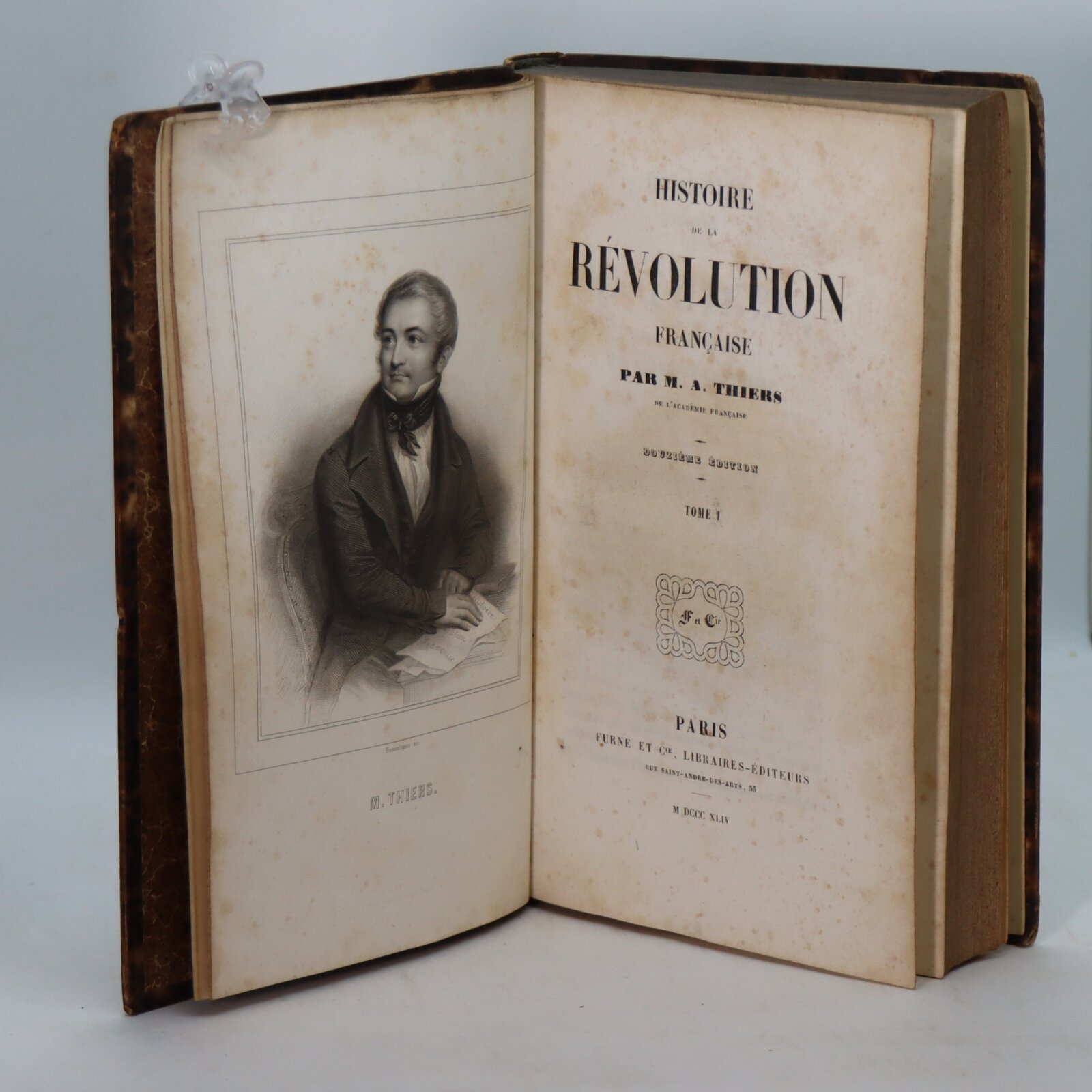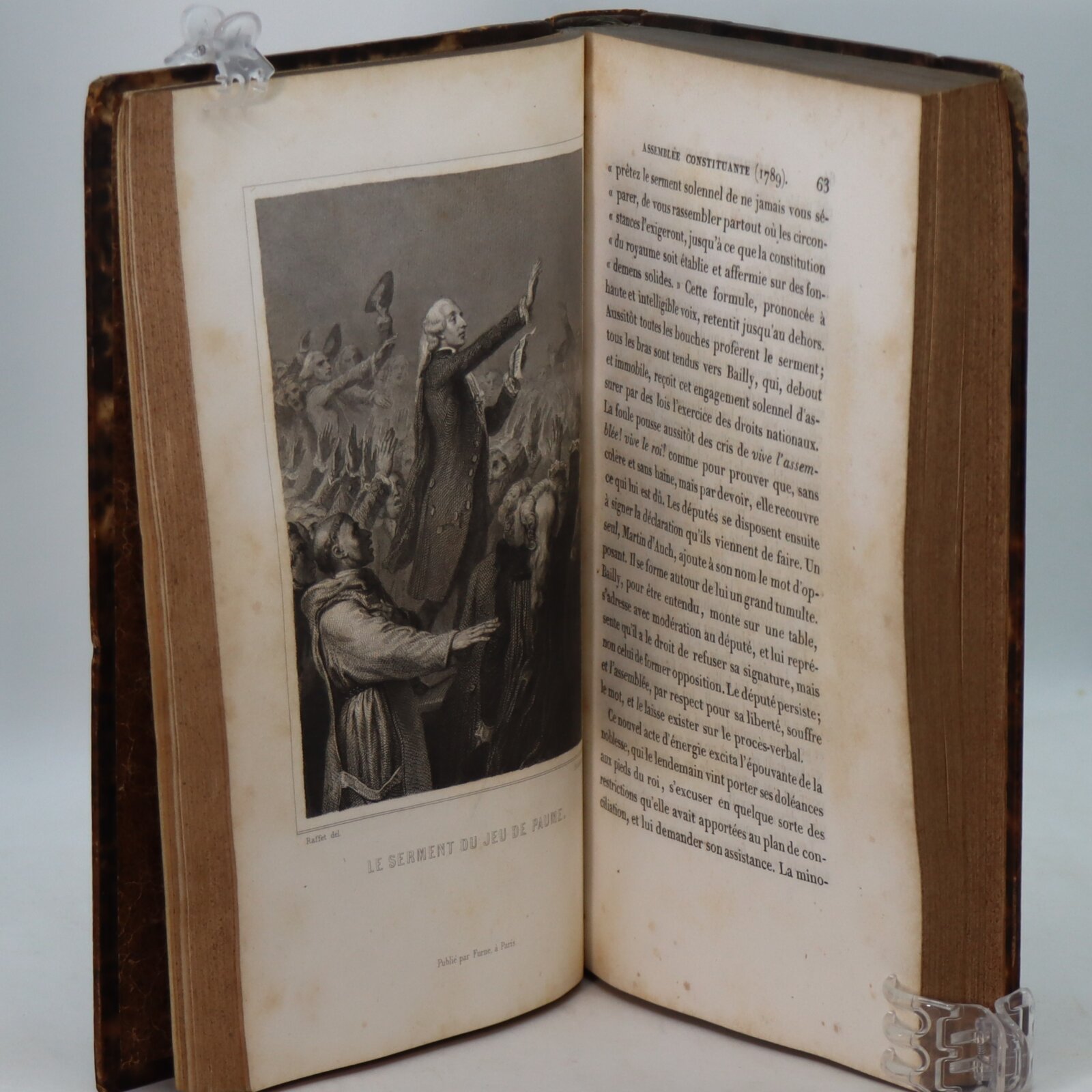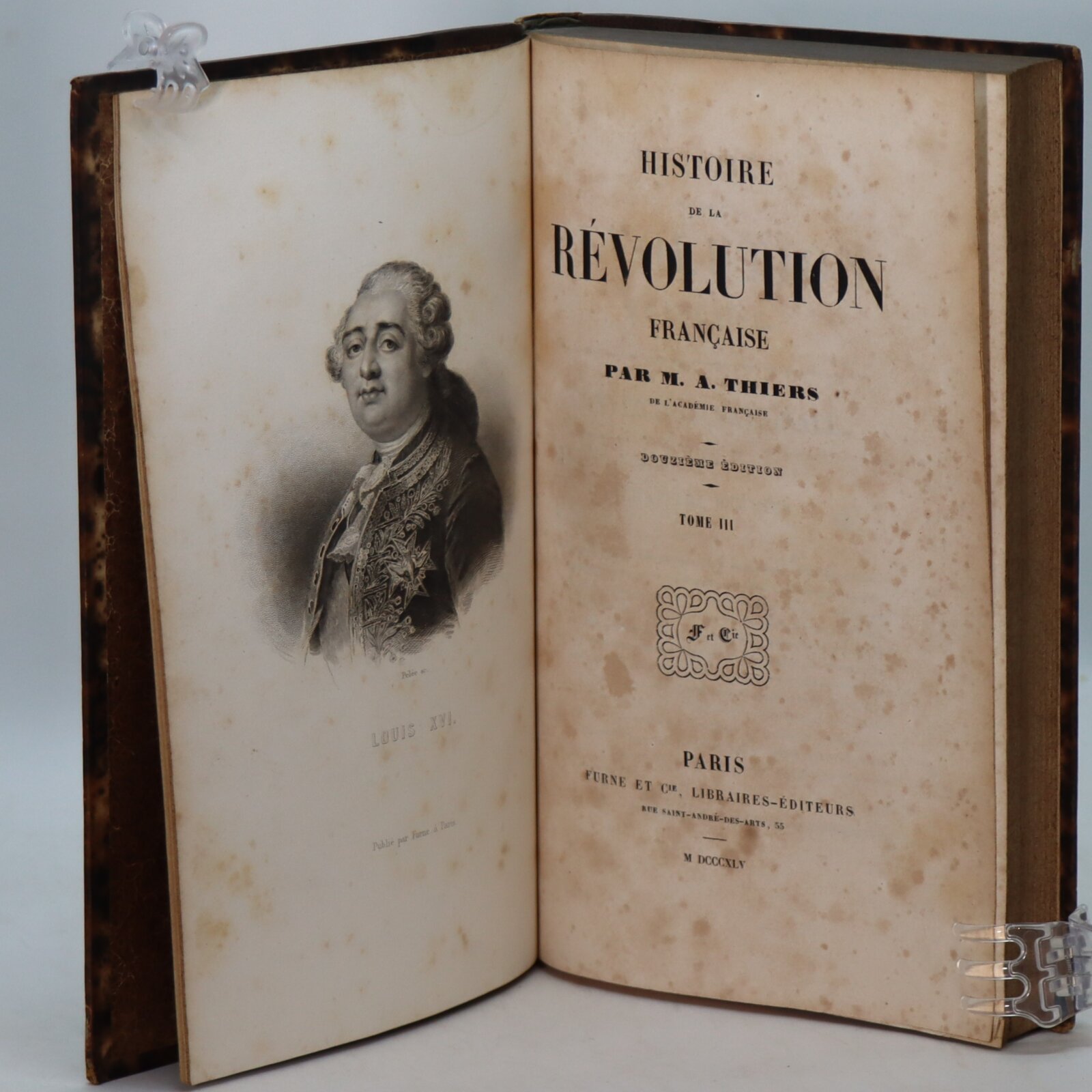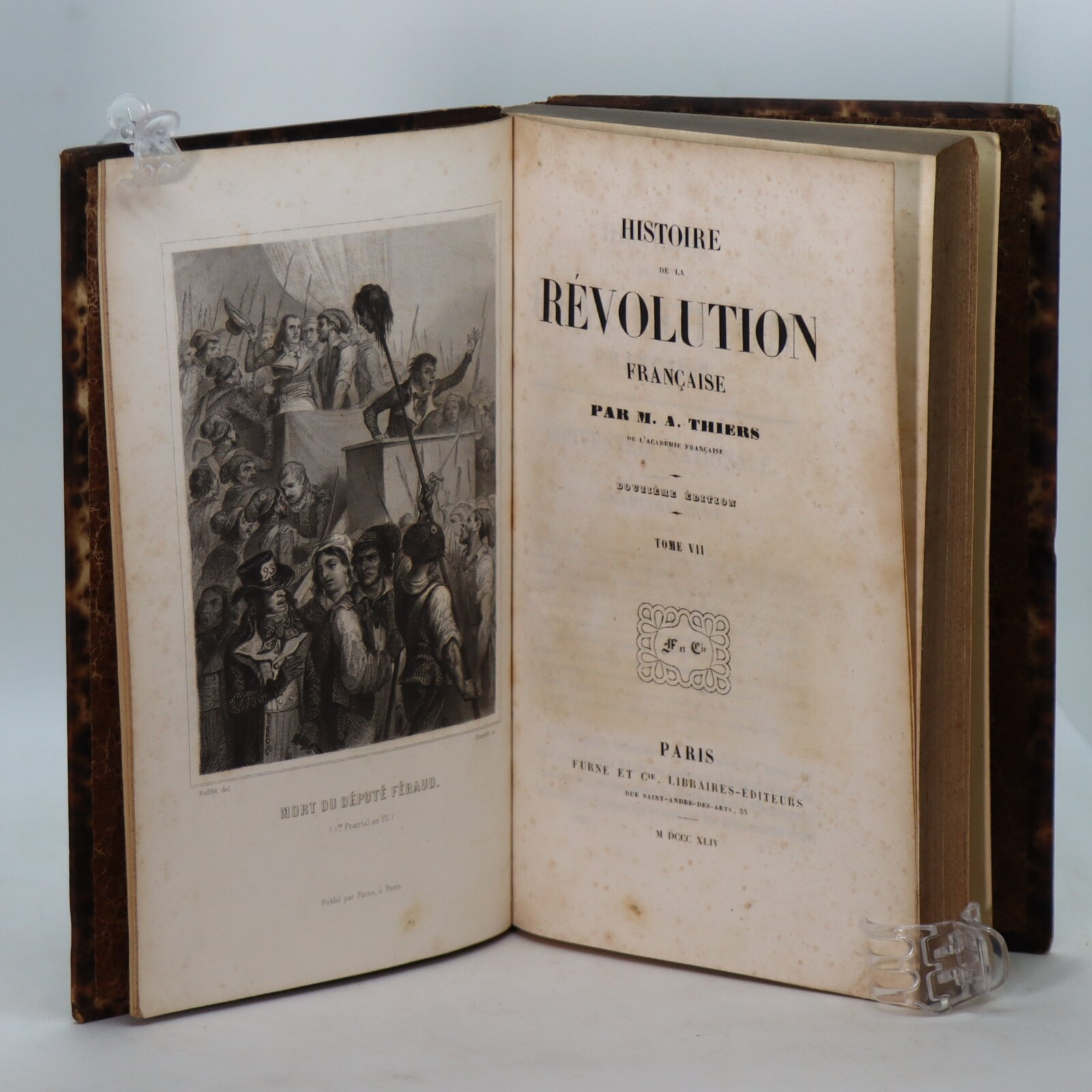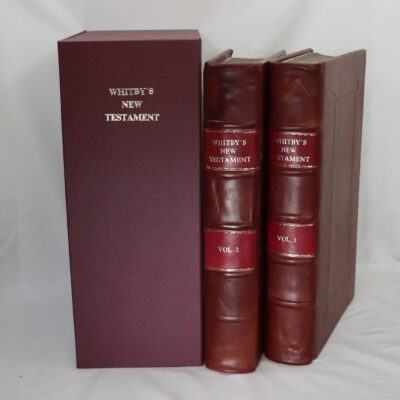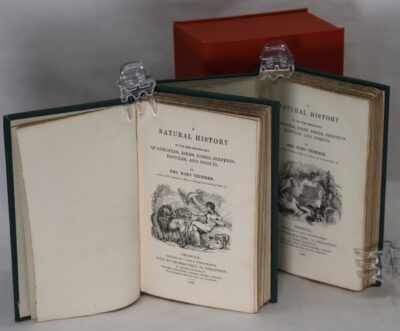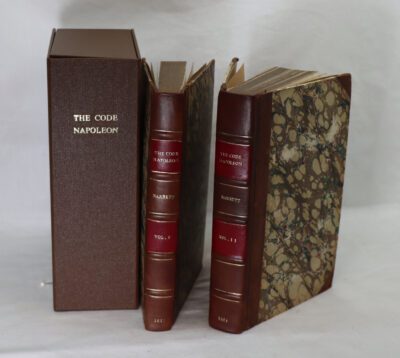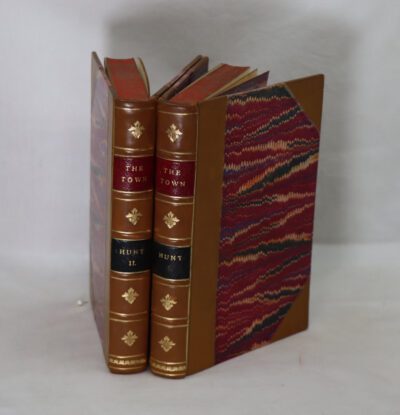Theirs. Revolution Francaise. Volumes 1 to 10.
By Par M A Thiers
Printed: 1844
Publisher: Furne Et Cie.Libraires. Paris
| Dimensions | 14 × 22 × 3.5 cm |
|---|---|
| Language |
Language: French
Size (cminches): 14 x 22 x 3.5
Condition: Fine (See explanation of ratings)
Item information
Description
Olive brown calf spine with olive marbled boards. Gilt title and flowers on spine with raised banding.
First Edition – an excellent full set
Marie Joseph Louis Adolphe Thiers 15 April 1797 – 3 September 1877) was a French statesman and historian. He was the second elected President of France, and the first President of the French Third Republic.
Thiers was a key figure in the July Revolution of 1830, which overthrew the Bourbon monarchy, and the French Revolution of 1848, which established the Second French Republic. He served as a prime minister in 1836 and 1840, dedicated the Arc de Triomphe, and arranged the return to France of the remains of Napoleon from Saint-Helena. He was first a supporter, then a vocal opponent of Louis-Napoléon Bonaparte (who served from 1848 to 1852 as President of the Second Republic and then reigned as Emperor Napoleon III from 1852 to 1871). When Napoleon III seized power, Thiers was arrested and briefly expelled from France. He then returned and became an opponent of the government.
Following the defeat of France in the Franco-Prussian War, which Thiers opposed, he was elected chief executive of the new French government and negotiated the end of the war. When the Paris Commune seized power in March 1871, Thiers gave the orders to the army for its suppression. At the age of seventy-four, he was named President of the Republic by the French National Assembly in August 1871. His chief accomplishment as president was to achieve the departure of German soldiers from most of French territory two years ahead of schedule. Opposed by the monarchists in the French assembly and the left wing of the Republicans, he resigned on 24 May 1873, and was replaced as President by Patrice de MacMahon. When he died in 1877, his funeral became a major political event; the procession was led by two of the leaders of the republican movement, Victor Hugo and Léon Gambetta, who, at the time of his death, were his allies against the conservative monarchists.
He was also a notable popular historian. He wrote the first large scale history of the French revolution in 10 volumes, published 1823–1827. Historian Robert Tombs states it was, “A bold political act during the Bourbon Restoration…and it formed part of an intellectual upsurge of liberals against the counter-revolutionary offensive of the Ultra Royalists.” He also wrote a twenty-volume history of the Consulate and Empire of Napoleon Bonaparte (Histoire du Consulat et de l’Empire). In 1834 he was elected to the Académie Française.
Thiers was just one example of 19th century French writers who also had prominent political careers. Others were Victor Hugo, Alphonse de Lamartine, and Alexis de Tocqueville; but Thiers was the only writer who reached the highest level of the French state. His major literary works were his ten-volume history of the French Revolution, and his twenty-volume history of the following period, the Consulate and Empire of Napoleon I. Both works were filled with Thiers’ personal opinions and judgments, but also benefited from his personal access to many of the participants, including his political mentor, Talleyrand, and Napoleon’s surviving generals. The first work, on the French Revolution, published between 1823 and 1827, was highly praised by French critics. It was the first major history in French of the Revolution and won Thiers a seat as the second-youngest elected member of the Académie Française, and in addition was a major commercial success. It condemned the violence of the Terror and the most radical leaders, including Marat, Robespierre, and Saint-Just, and glorified the ideals and the more moderate leaders of the French Revolution, including Mirabeau, Bailly and Lafayette, though at the time the book was published France was still a monarchy, and the singing of the Marseillaise was still forbidden. The books did much to undermine public support for the last Bourbon king, overthrown in the Revolution of 1830.
His second major work was his enormous History of the Consulate and the Empire, in twenty volumes, published between 1845 and 1862. Like the history of the Revolution, it was a critical and popular success in France, published at a time when the French public was looking for heroes. It sold 50,000 complete sets of the book. An American professor of French literature, O.B. Super, wrote a foreword to an American edition of the volume of Thiers’ book on the Battle of Waterloo, published in 1902. He wrote: “Thiers’ style is characterized by brilliant and dramatic descriptions and a liberal and tolerant spirit, but he is at times deficient in rigorous historical accuracy, and owing to the intense national feeling of the writer, his admiration for Napoleon sometimes gets the better of his judgement. Thiers did more than any other Frenchman to keep alive in France “la légende napoléonienne”, which made possible the second empire with all its disastrous consequences for France.” Thiers’ account of the French invasion of Russia was sharply criticized by Leo Tolstoy for its factual inaccuracies and “general high-flown, pompous style, devoid of any direct meaning.”
Thiers also wrote a history of the 1830 Revolution, in which he played an important part, and a memoir, called Souvenirs. His speeches were collected by his widow and published after his death.
Want to know more about this item?
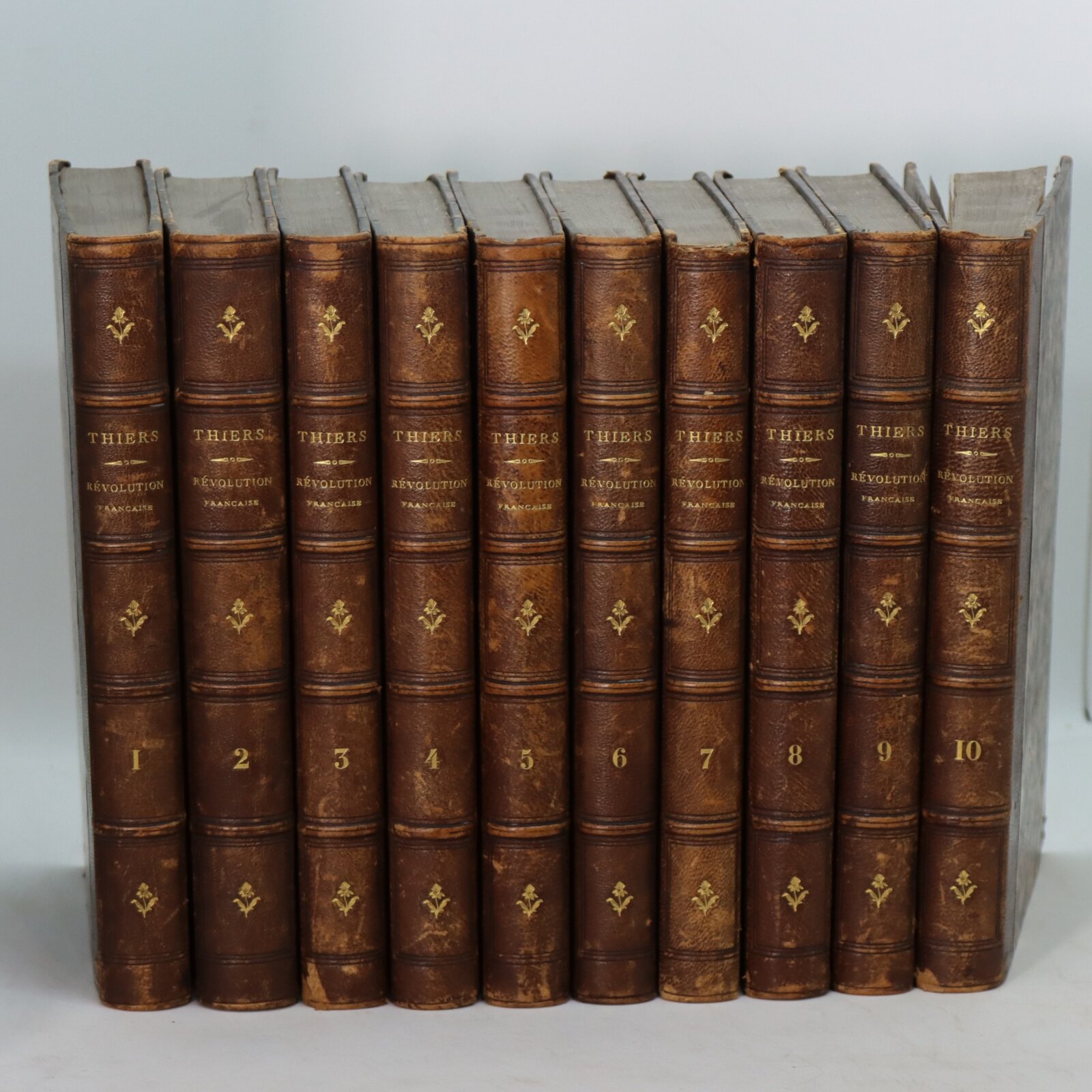
Related products
Share this Page with a friend

